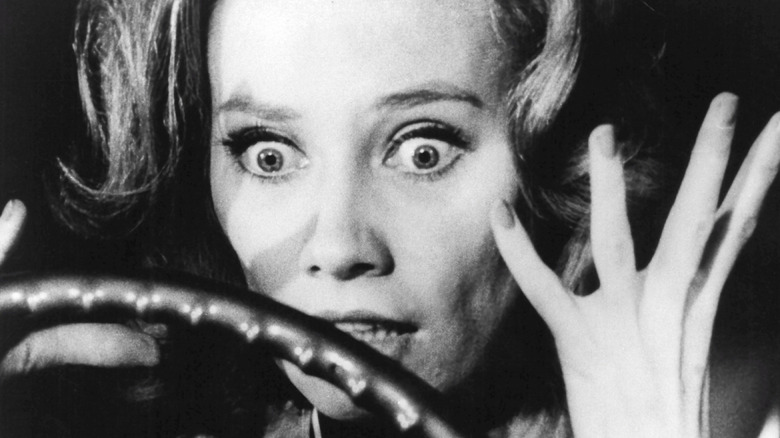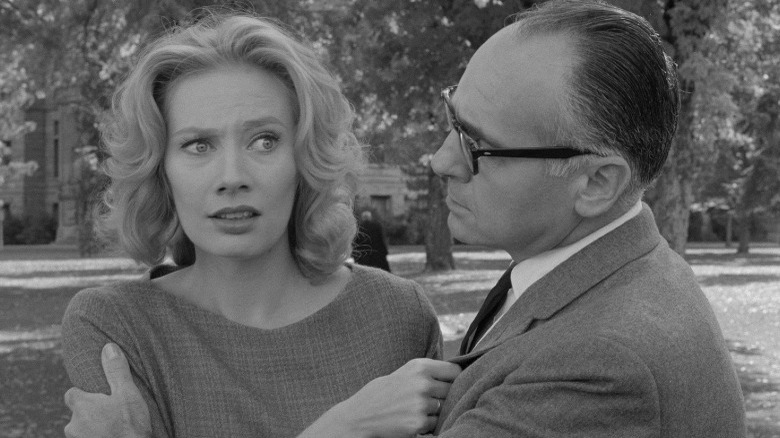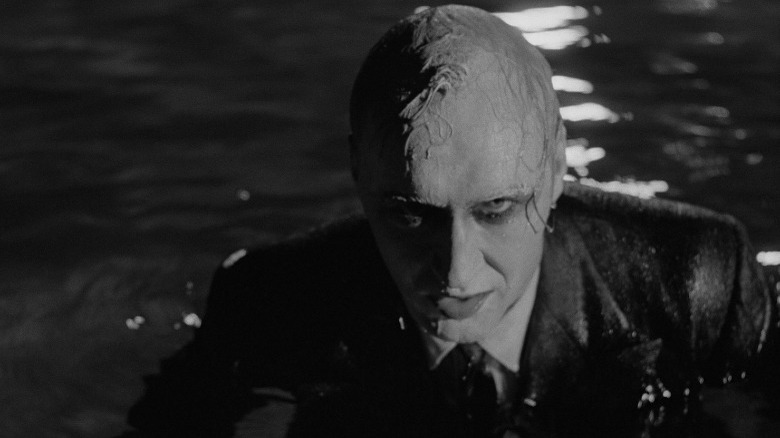The Daily Stream: Carnival Of Souls Retains Its Creepiness 60 Years Later
The Movie: "Carnival of Souls"
Where You Can Stream It: HBO Max
The Pitch: Years ago, Utah's Megaplex Theatres chain used to screen a clip from "Carnival of Souls" as part of its pre-show of film trivia and ads for local businesses. I remember being intrigued by the shots of Candace Hilligoss walking among the decaying remains of the second Saltair pavilion, Saltair II, on the shores of Utah's Great Salt Lake, which wasn't all that far from where I lived. The area surrounding the pavilion was a real ghost land when the film was made in the 1960s, with little but sand and water for miles. Not much has changed since then; today, if you head far enough west of Saltair III (which was built after Saltair II burned down in 1970), you will pass by the Bonneville Salt Flats, which were used to portray the literal hell that is Davy Jones' Locker in "Pirates of the Caribbean: At World's End."
It's no wonder "Carnival of Souls" director Herk Harvey, who spent most of his career making industrial and educational films for the Centron Corporation, took one look at the abandoned Saltair II while driving across Utah and knew right away he wanted to use it as the backdrop for a horror movie. As Harvey recalled to the Los Angeles Times in 1990, he recruited his co-worker, John Clifford, to write the script, telling him, "The last scene ... had to be a whole bunch of ghouls dancing in that ballroom; the rest was up to him." This was almost 20 years before Stanley Kubrick created his own eerie vision of a spectral ballroom in "The Shining."
Why it's essential viewing
Released in 1962, "Carnival of Souls" stars Candace Hilligoss as Mary Henry, who's riding in a car with two other women when they challenge a pair of men to a drag race. In a shocking turn of events, the race culminates with the women's car plowing off a bridge and into the impenetrably muddy river below. Shortly after, a dazed Mary emerges on the nearby shore, having miraculously escaped the current and swum to safety. Clearly traumatized by what happened, she decides to leave her home in Kansas and take up a job as a church organist in Salt Lake City, despite her lack of religious affiliations or beliefs.
The specter of "The Twilight Zone" looms over "Carnival of Souls," much like Mary finds herself being stalked by a silent, sunken-eyed, pale-faced man (a role Herk Harvey played on top of directing) upon her arrival in SLC. Its plot would feel right at home on Rod Serling's classic anthology series, from the way Mary inexplicably gravitates to the ramshackle Saltair II from the moment she sees it, down to the big twist ending you may have already figured out (to be fair, it was a little less overdone 60 years ago). But just because you know where it's going doesn't make the actual film any less unsettling.
In the same way "The Twilight Zone" uses suspense and horror to expose the failings of society, "Carnival of Souls" explores how lonely (and scary) the world can be for someone who is tormented by things no one else can perceive, especially a young woman. The people in Mary's orbit are all pretty useless at helping her recover from and process her near-death. They either wag their fingers at her for isolating herself, or, in the case of the creepy "nice guy" (Sidney Berger) who resides at the lodgings where she stays in SLC, aggressively demands her romantic interest. Other men act equally entitled to Mary's time and attention, among them a doctor (Stan Levitt) who stops her on the street after Mary has a vision of the pale figure stalking her. He then proceeds to take her back to his office, casually admitting he's not actually a psychiatrist (!), but insisting she listen to him all the same.
I don't belong in the world
"Carnival of Souls" is a precursor to "Night of the Living Dead," combining sharp black-and-white visuals with guerrilla filmmaking to bring its spooky tale to life, much like George A. Romero would with his zombie classic six years later. That Herk Harvey did this with a shoe-string budget less than a third of what Romero had to draw from only makes it all the more impressive. Rough edges aside, Harvey displays real technical prowess in the only feature film he ever directed, from a nightmare-inducing jump scare during an early moment where Mary Henry is driving a car, to the startling scenes where, without warning, no one around her can either see or hear Mary anymore (further estranging her from the world). And Gene Moore's sinister organ score, which follows Mary no matter where she goes? By the time the movie is over, it will be haunting you, too.
You can see why "Carnival of Souls" didn't take off upon its initial release in the early 1960s. It's a film about the horror of being a woman in a world where you're expected to behave a certain way and cater to the whims of men, lest you be alienated and left alone to fend off your demons (real or imagined). We can quibble about the original intended meaning of the movie, but that's how it plays in 2022. Harvey's camera further vilifies those closest to Mary, be it by showing her neighbor leering at her while she puts on a robe, or visually linking her overbearing, self-appointed doctor with Harvey's pale, grinning specter. It's no wonder the film has gone on to make its influence felt in the works of other esteemed horror directors, be they David Lynch or James Wan (whose "Insidious" movies, in particular, owe a major debt to Harvey's upsetting vision).
And yes, the ghoulish ballroom dancing scene Harvey wanted all along is pretty hair-raising, too, as is the actual final shot in the film.


